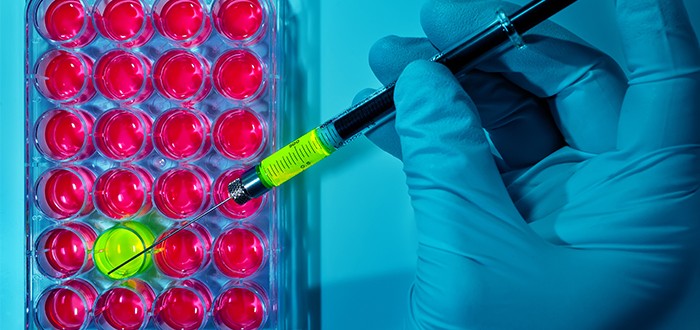Two serum biomarkers that may be particularly helpful in diagnosing malignant pleural mesothelioma at an early juncture are soluble mesothelin-related peptide and thioredoxin-1.
In research conducted by a team from Dicle University in Diyarbakir, Turkey, these two serum biomarkers were found to be increased in individuals who had been exposed to asbestos.
Asbestos exposure is the cause of mesothelioma. It is therefore probable that an asbestos-exposure victim with symptoms of mesothelioma does in fact have the cancer if he or she shows an increase in these two serum biomarkers.
According to the researchers, soluble mesothelin-related peptide and thioredoxin-1 are useful biomarkers individually or together.
Biomarker is scientific shorthand for biological marker. A biomarker is sort of like a flag that living organisms such as cells wave when viewed under a microscope or analyzed by some other lab process.
Biomarkers are useful in medicine because they serve as signals of health — or the absence of health — in the organism being studied. Healthy cells display biomarkers of one sort, while unhealthy cells display those of another sort.
Patients With and Without Mesothelioma Studied
The findings from Turkey were published in a recent issue of the journal Lung. The title of the study was “Evaluation of New Biomarkers in the Prediction of Malignant Mesothelioma in Subjects with Environmental Asbestos Exposure.”
The researchers explained why they initiated their investigation. It was to evaluate the possibility of using soluble mesothelin-related peptide and thioredoxin-1 for making very early diagnoses of mesothelioma in individuals exposed to asbestos.
The researchers said they reached their conclusions about soluble mesothelin-related peptide and thioredoxin-1 with data collected from 131 individuals. The 131 were divided into three study arms.
The first group consisted of 41 adults. All of them were healthy. They served as the control group.
The second group was made up of 48 people. The members had all been exposed to asbestos. However, none had mesothelioma.
In the third group were 42 individuals. Each one of the members of this arm had been exposed to asbestos and diagnosed with malignant pleural mesothelioma.
Mesothelioma Biomarkers Identified
Next, the researchers identified the biomarkers present. Serum levels of soluble mesothelin-related peptide and of thioredoxin-1 were detected.
So were serum levels of epidermal growth factor receptor, fibulin-3, syndecan-1 and mesothelin. Benign pleural plaques were found in almost 60 percent of the members of the asbestos exposure-only group.
The asbestos exposure-only group also had high levels of soluble mesothelin-related peptide, thioredoxin-1 and mesothelin. These levels were notably higher than those observed among the control group’s members.
On the other hand, soluble mesothelin-related peptide, thioredoxin-1, epidermal growth factor receptor and fibulin-3 levels were higher for the group with malignant pleural mesothelioma than they were for the asbestos exposure-only arm.
The malignant pleural mesothelioma group had far less levels of syndecan-1 than did the asbestos exposure-only group.
However, only two biomarkers were seen as having increased in a way that suggested potential usefulness as a diagnostic aid. Those two were soluble mesothelin-related peptide and thioredoxin-1.
“Unlike the other biomarkers, soluble mesothelin-related peptide [and] thioredoxin-1 levels increased in a graded fashion among the control, asbestos exposure, and malignant pleural mesothelioma groups,” the researchers wrote.
“The combination of the biomarkers reached a sensitivity of 100 percent, but had lower specificity — as high as 27.7 percent,” the researchers added.


